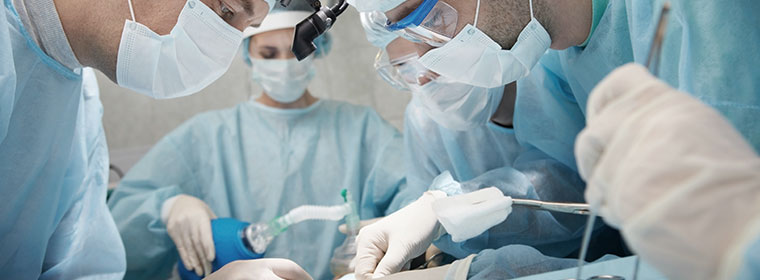Intraoperative Mistakes

Are intraoperative mistakes acceptable?
This in an interesting area of exploration because human beings, even highly trained surgeons, can make intraoperative mistakes during a procedure. Human being are not perfect, so we can’t expect that everything will go perfectly during an operation. So where is the line between an acceptable technical error and medical negligence or malpractice?
In the analysis of this issue, we use a number of criteria. One criteria is a set of basic rules of the road as to how the procedure should be done in the surgical community. These rules are not really rules but are rather generally accepted standards. For example, the surgeon should not be under the influence of drugs or alcohol. The surgeon should have the basic training necessary to allow him to do the operation. The correct instruments for the procedure should be present and available for use. The operation should be in the correct location of the body.
Then there are more subtle issues, which I will label as intraoperative technical issues. For example, when placing a bone graft in a cervical spine disc space, has the graft been measured to assure that it will not be too large for the space and crush the spinal cord? I have had two cases in which a combined team of a neurosurgeon and an orthopedic surgeon used a bone graft that was simply too large, improperly measured, and then improperly placed, injuring the spinal cord. This is clearly not an acceptable technical mistake. So, how did it happen? Wasn’t anyone paying attention? These kinds of errors are below the standard of care, they break the rules.
intraoperative mistakes in complicated procedures
In light of this analysis, let’s consider the other end of the spectrum, cerebral aneurysm surgery, where the surgery is technically challenging and risky. Because the aneurysm is delicate and can burst open and hemorrhage with the slightest of manipulation, it is hard to say that the surgeon deviated from the standard of care when an aneurysm bursts during the surgery. Oddly, this analysis almost excuses the surgeon from question because the surgery is risky, rather than questioning what he may have done to precipitate the bursting of the aneurysm.
As an attorney analyzing the risk and potential benefit of taking on a case based on an aneurysm bursting during dissection, I probably won’t take on such a case because we do not have a video record of what the surgeon was doing during the surgery. There are no required black boxes recording what is going on during the surgery. Let’s ask the question: why do airplanes have recording devices but not operating rooms? Why do pilots have to get FAA physicals but not surgeons? Food for thought as to what might be done to increase patient safety.

